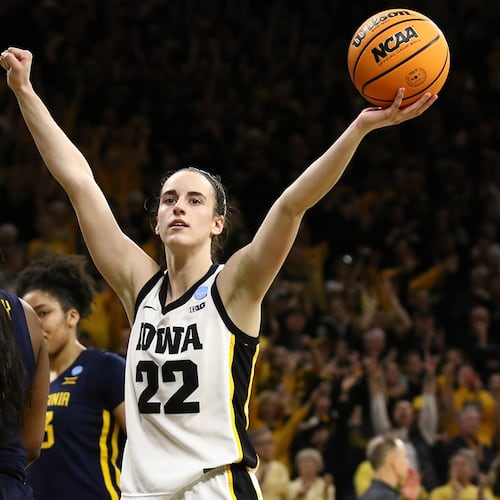It's hard to imagine Julio Teheran pitching for a team other than the Atlanta Braves. Up to now, he hasn't. That's about to change. He signed with the Angels for what ESPN reports as $9 million for one year, the Braves having saved $11 million by buying him out for $1 mil. I probably feel worse about this than you do.
Background: As recently as 2016, which isn’t all that recent, I was sold on Teheran. He wasn’t just the best pitching prospect the Braves had produced since Steve Avery; he was the best Braves pitcher since the Cooperstown Three of Glavine/Maddux/Smoltz began to scatter. Many among you insisted he wasn’t an ace. I suggested, rather often, that he was. I suggested that the Braves resist all trade overtures because he was exactly the caliber of pitcher they’d need when they got good again.
Update: The Braves are good again. They’ve won the National League East two seasons running. Teheran was deemed so indispensable to the cause that he made the 2018 playoff roster only as a long reliever and was omitted from the original slate submitted for the 2019 NLDS. This changed only when Chris Martin hurt himself between the bullpen and the pitching mound in Game 1. Teheran was deployed only in the 10th inning of a tied Game 4. Four batters later, the game was untied.
I wish I could tell you what happened, but I don't know. I've spent thousands of words – if you've read all of them, you have both my thanks and my apology – trying to suss this out, and I'm not sure I've made a lick of sense. I'm not sure there's sense to be made. He was an All-Star at 23. He was among the best dozen pitchers in baseball at 25. The Braves bought him out at 28. That's quite the career arc.
Generally speaking – and by "generally" I mean 99 times out of 100 – a pitcher declines that abruptly only because he has hurt his arm. So far as we know, Teheran did not. Indeed, the one thing we know for sure was that he'd take the ball. Here's the complete list of pitchers who've started more games than Teheran since Opening Day 2013: Jose Quintana, Jon Lester, Max Scherzer. The first two logged 224 starts, with Scherzer one behind. Teheran made 222 starts.
And yet: The Braves paid this pillar of their rotation $1 million to go away. This isn't to say they were wrong – though, going by FanGraphs WAR, last season was the third-best of his career. But here's where we note that the pitcher who made the fourth-most starts over the past seven seasons, ranked 47th among MLB pitchers in fWAR over that span. Which is, in a word, nuts.
Teheran started as a hard thrower. According to Brooks Baseball, he topped 96 mph in 2010, when he was in Double-A. His average four-seamer last season was delivered at 89.94 mph. He fell in love with his two-seamer for a while; then he returned to his four-seamer. He averaged 2.18 walks per nine innings in 2013, his first big season; he averaged nearly twice that in 2019. In 2017, he yielded 1.48 home runs per nine; in 2019, when everybody was hitting everything out of the park, he cut his HR-per-nine yield to 1.13.
In 2019, he ranked 11th among NL pitchers in batting average against. Ahead of him on that list: Sonny Gray, Jacob deGrom, Stephen Strasburg, Max Scherzer and Clayton Kershaw. Behind him: Aaron Nola, Hyun-Jin Ryu, Mike Soroka, Noah Syndergaard and Zack Wheeler.
And it wasn’t as if he stopped striking people out. His K-per-nine rate in 2019 was 8.35, a career best. (This with an 89-mph heater, we note again.) But his walks-per-nine of 4.38 was the league’s third-worst, which is why his FIP (fielding independent pitching) was also the third-worst. FIP is the pitching number sabermetricians check first. When your FIP is markedly higher than your ERA, that’s a warning flare.
That said, he still took the ball every fifth day. Trouble is, his walks became so maddening that Brian Snitker began to pull him ASAP. Teheran’s ERA last season (3.81) was 13th-best among National Leaguers, which is good stuff from a No. 4 starter. His quality-start percentage (0.45) was the 12th-worst. He couldn’t make the requisite six innings because he was forever nibbling and running up his pitch count and issuing free passes.
He is, we say for the ten thousandth time, one odd pitcher. He started six consecutive Opening Days, but the past two Octobers saw the Braves unwilling to grant him a postseason turn. (While handing Mike Foltynewicz a second start on short rest in 2018 and doing the same with Dallas Keuchel this year, neither to great effect.) It was time for the Braves and Teheran to part, and so they have. He’s somebody else’s enigma now.
On a personal level, I’ll miss him. He was fun to watch in 2013 and 2016 because he’d overwhelm good hitters. He threw four pitches, all of which could generate swings-and-misses. Even after the slippage began, he was fascinating because he wouldn’t give in to hitters and we – and surely they – never knew what was coming next.
In the end, that’s what did it for the Braves. With Teheran, they couldn’t be sure what they’d be getting. Now watch him go have an All-Star year in Orange County.
About the Author
The Latest
Featured


